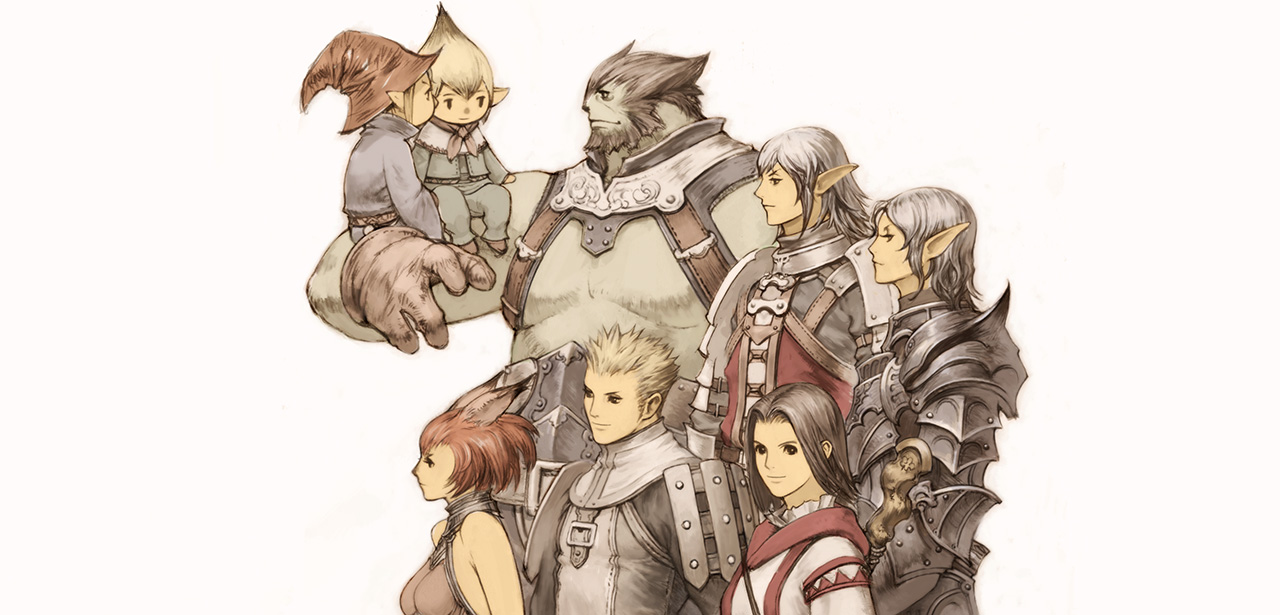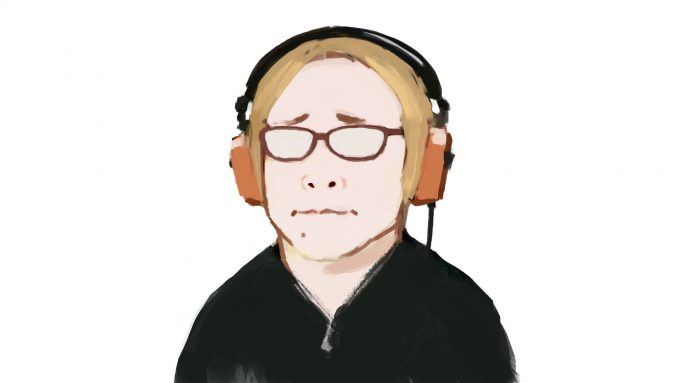WE GREW VANA’DIEL is a series of interviews with those who were involved in the development of FINAL FANTASY XI (FFXI), as well as guests from other companies. Our guest for this installment is Ryosuke Aiba, the original Art Director of FFXI who designed backgrounds and monsters, as well as the infamous subligar. How did Mr. Aiba come to join the FFXI team and design the world of Vana’diel? In this third part, Mr. Aiba explained how his mentality changed after FFXI launched, and also shared his memories of designing gear.

After joining Square in 1997, Mr. Aiba worked as a 2D and 3D artist for Xenogears and Chrono Cross. He was the first to assume the role of Art Director for FFXI and was involved in designing backgrounds, monsters, and character textures. Mr. Aiba then departed from Square Enix to join Hideo Minaba and others to found CyDesignation, Inc. in 2012, assuming the role of Director, where he has been involved in developing Rage of Bahamut and Project Awakening for Cygames.
Realizing the truth from watching players
The first adventurers set foot in Vana’diel during the beta test in December of 2001. How did you feel when you saw everyone coming in?
- Aiba
I was overjoyed and moved to see everyone playing FFXI. Before that, I felt very apologetic towards our players considering development had been delayed, the part that later became Rise of the Zilart wasn’t ready at launch, and all the gear had the same brownish color. Furthermore, the world we’d created didn’t seem very lively to me, and I was constantly worried that we hadn’t done enough and could’ve done better.
But my attitude changed when I saw our players enjoying the game. It was inspiring to realize that each character represented a real person and that my concerns came from my own misconception. Could you explain what that misconception was?
- Aiba
When we were developing games prior to FFXI, we were blindly putting our work out there and hoping everyone would like it. But working on FFXI helped me understand that game development was about providing our players with ways to have fun. The whole point of the game was to have players there, and I became more conscious of that idea after launch.
That sounds like an epiphany you could only experience through online games.
- Aiba
Before FFXI, our developers never had the opportunity to see live feedback from their players. Each member of our team had their own motivations for developing games, whether it was showing everyone what we could accomplish, designing fascinating game mechanics, or the freedom to create whatever they wanted. But watching our players in FFXI taught me that making games was more like putting a gift basket together, so from there on out, I made sure to have a clear vision of what I could do to provide enjoyment for a wider audience.
The struggles of low-level fashion
What was it like to be working on version updates and Rise of the Zilart after launch?
- Aiba
The amount of work I had would be unbelievable nowadays. Out of the five days I worked each week, I pulled all-nighters almost every day. (laughs wryly) That obviously affected my work efficiency, but it couldn’t be helped since there was always something due every day.
Gear designs must’ve been particularly demanding since each race had their own variation.
- Aiba
The design process was challenging, even if some design elements were reusable. After all, as you mentioned, our initial concept called for adding small tweaks for each race. However, our team’s highly talented 3D modelers were able to add those race-specific details on their own even if they weren’t included in the base design.
Back then, stylish gear was a huge motivation for me to level up because the low-level gear looked really drab; was that done deliberately?
- Aiba
That was intentional; that said, I personally wanted to have more stylish gear sprinkled throughout the lower levels where the majority of gear looked rather plain. But the planning staff saw the stylish designs and remarked, “Ah, we’ll reserve these for a higher level,” and I wistfully thought to myself, “But that was supposed to be the highlight of that level range…” (laughs wryly)
As a result, many of us aspired to get our hands on gear like the Iron Musketeer’s set and Vermillion Cloak; after all, the gear you wore also meant a lot in terms of player expression. Did you have any gear combinations in mind when you were designing individual pieces?
- Aiba
I had some outfits in mind, though I wouldn’t say all of them turned out as planned. Certain pieces were designed in hopes they’d be assigned to the same level range, but some ended up in unintended combinations or couldn’t be worn with their imagined counterparts.
Undertaking new challenges for expansions
Each expansion introduced new stories and content, but what were some of your noteworthy endeavors from a graphical perspective? As a player, I had the impression that the gear, scenery, and monster designs greatly varied with each new expansion, which was especially true for the distant locales we explored in Treasures of Aht Urhgan.
- Aiba
We always challenged ourselves in new ways, such as creating 3D models with complex details that were previously unfeasible, or proactively using quads (polygons with four vertices) in background designs.
Going back to Aht Urhgan, those areas were especially impressive for their skylines.
- Aiba
The scenery in Treasures of Aht Urhgan was the pinnacle of all that we’d created before. I recall the background team eagerly tackling any challenge that was within their reach.
But at the same time, I can only imagine certain aspects of development only grew more complicated over the years. For instance, was it a struggle to make FFXI’s graphics work within the PlayStation 2’s specifications?
- Aiba
A colleague once claimed that our graphics were progressively hampering the game performance, but that couldn’t have been true since we’d been working under the same limitations since launch. Whatever resources we could conserve were reallocated to other aspects, and there were technological advancements in reading and discarding data more efficiently, which expanded the range of what we could do. Some improvements simply came about because we thought of a better method, but in any case, all of those factors contributed to the gradual evolution of our graphical capabilities.
* Part 4 will be available on November 30, 2022.




